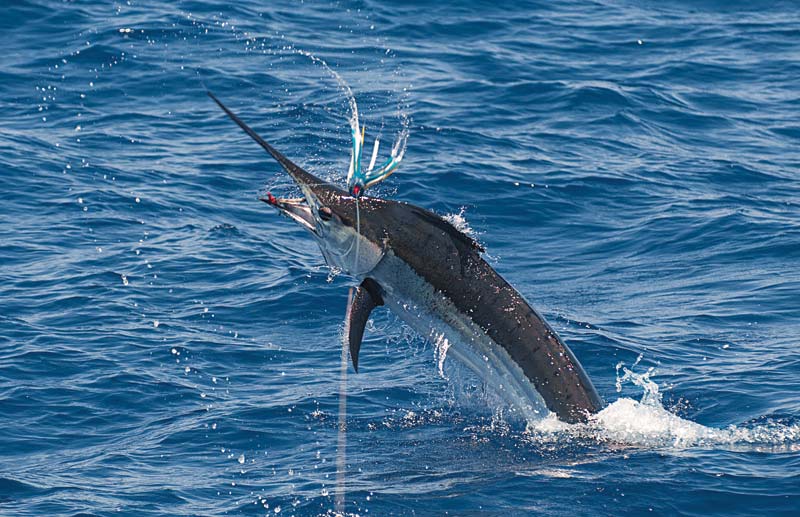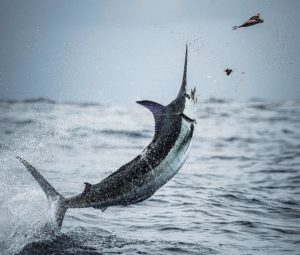
marlin fishery management
The other day, I was looking back at some of the articles I had written for Marlin more than a dozen years ago. Much of what I reported back then remains true today. There has been some progress in fishery management and conservation, but not nearly enough.
In 1998, I pointed out that fishery management is a political process. All too often, management decisions have little or nothing to do with what’s good for the resources. Part of the problem stems from the fact that we, as recreational anglers, don’t want to get involved in the complex fishery management process. We don’t take the time to stay informed, we don’t attend fishery management hearings, we don’t comment on management proposals, and not enough of us support the conservation groups that are trying to represent our interests.
I suspect that the membership levels of most conservation groups aren’t much better now than they were a decade ago. Folks, these are the groups that are fighting for your right to fish and for the resources you use — you need to support them.
When I first started writing for this magazine, I pointed out that most of the species we enjoy targeting as sport fishermen had become severely depleted due to poor management. For some of those species, there was no management at all.
I would like to report that all my ranting about the deplorable condition of marlin, bluefin tuna, swordfish and sharks has resulted in major improvements. Sadly, such is not the case. Only the swordfish has been rebuilt to a healthy level. The closing of a large area of spawning grounds to longlines saved this fishery. And that closing didn’t come about through some benevolent decision by fishing managers — it took threats of a lawsuit from conservation interests.
When the International Commission for the Conservation of Atlantic Tunas (ICCAT) assumed management of Atlantic blue and white marlin in 1998, I expressed grave concerns. Theoretically, international management made sense since marlin are highly migratory and travel among different countries’ waters. The United States was the only country that prohibited the retention and sale of Atlantic billfish. I expressed hope that ICCAT would follow the U.S. example and protect marlin. At the same time, I harbored doubts that ICCAT would make the right management decisions — for more than 20 years, ICCAT management had been steadily leading bluefin tuna toward oblivion.
Just a few years later, a continuing decline in white marlin prompted Jim Chambers, a former National Marine Fisheries Service (NMFS) staff member, along with the Biodiversity Legal Foundation, to file a petition for the listing of white marlin as a threatened or endangered species. The petition was rejected by NMFS, and whites have continued to decline ever since.
Over the years, I’ve sat in on countless management hearings on billfish, swordfish, tuna and sharks, not to mention smaller species such as king mackerel, amberjack, bluefish, dolphin and Spanish mackerel. Often, I was the only sport-fishing representative in the room. I recall at a swordfish hearing in Pompano Beach, Florida, sport fishers were complaining that the swordfish was so depleted that all sword tournaments had shut down. At the same time, a longliner told the group of mostly commercial fishermen and fishery managers that there were more swordfish out there than there had been buffalo in pioneer days. Someone in the room quickly pointed out that market hunters had wiped out the buffalo in the same manner as the longliners were currently doing with swordfish. It took another 10 years before managers put serious protection for swordfish in place and sword tournaments and recreational fishing could resume.
In the International Game Fish Association (IGFA) library, you can find old photos of a blue marlin tournament once held in south Florida. They show numerous blue marlin lying out on the grass. Back in those days, when there were so many fish that conservation was not an issue … If we only knew then what we know now.
A new stock assessment of blue marlin is scheduled this year. The last assessment was in 2006. It will be interesting to see what it tells us about the status of blues. The problem is a lack of reliable reporting by many ICCAT countries. Some don’t report any marlin bycatch on longline vessels. Other reporting is sketchy, so any conclusion reached regarding the status of blue marlin is subject to interpretation.
The previous assessments concluded that blue marlin in the Atlantic declined about 80 percent from their 1960 abundance. I would like to think that the management measures that ICCAT placed on marlin have resulted in a noticeable improvement; however, what I would like to think and reality are two different things.
Many readers of this magazine haven’t been around long enough to remember when shark fishing was almost exclusively recreational. An early NMFS impact study on sharks estimated that recreational anglers caught 97 percent of the total landings up until the 1970s. Sharks were plentiful, and no management plan was needed. Then, in their wisdom, NMFS decided that sharks should be declared “underutilized.” They promoted the commercial shark fishery and helped develop foreign markets. They did this in spite of countless studies showing that no large-scale commercial shark fishery had ever been sustainable.
Soon, commercial shark landings skyrocketed and recreational landings plunged. It took NMFS four years to come up with an “emergency” shark management plan, and in the end, NMFS allocated the majority of landings to commercial interests. Now, many shark species are so depleted that landings are totally prohibited. There are only a few species that anglers can keep, and even commercial shark landings, excluding dogfish, remain insignificant.
The classic example of failed fishery management is that of the bluefin tuna. It has been proposed for listing as a threatened or endangered species three times since the mid-1970s. The most recent proposal is currently under consideration by NMFS. Ironically, the depleted level that bluefin were first proposed for being listed at under the Endangered Species Act in the 1970s now represents the distant goal to which fishery managers would like to rebuild the stock. But, since bluefin tuna are the most valuable fish in the sea, that goal is but a distant hope. Constant, intensive lobbying by international commercial fishing interests keeps the bluefin fishery from falling under a complete moratorium. In the meantime, spawning grounds remain open to longlines in the Gulf of Mexico and to nets in the Mediterranean Sea.
It’s interesting to note that under the original federal fishery management legislation, the bluefin tuna was not included as a fish. Giant U.S. tuna purse seiners lobbied to have bluefin excluded from any management. They knew that if the United States recognized bluefin under its own laws, the laws of other countries would have to be recognized as well.
With no recognition of bluefin, U.S. vessels could ignore all foreign regulations and fish with impunity wherever they wanted. If U.S. vessels were impounded for fishing in foreign waters, the United States imposed restrictions on the arresting country’s exports. U.S. taxpayers ended up paying for the lost gear. Finally, in 1990, bluefin were included in U.S. management laws.
You may think that after so many years, all that could be said about fishery management would have been said already. However, new management issues, such as “catch shares,” constantly arise, and there never seems to be a shortage of conservation issues worthy of being brought to the attention of Marlin readers — especially given the reality that many of our favorite species’ stocks are still depleted.







